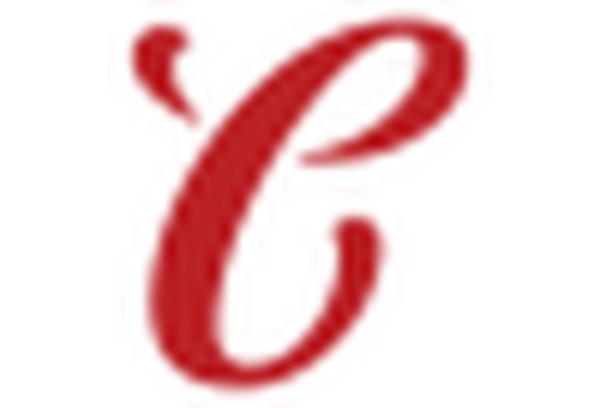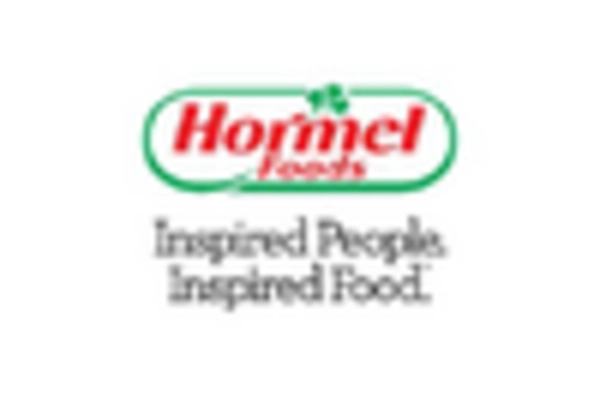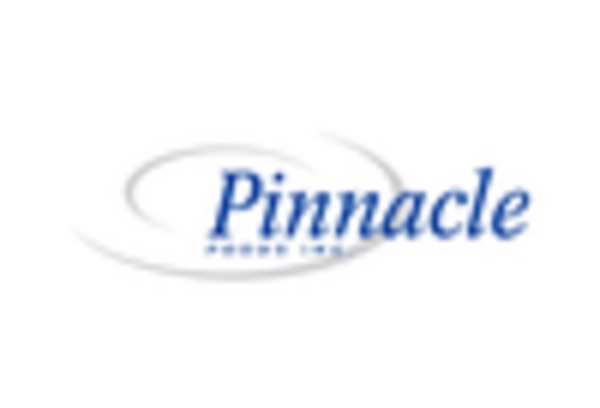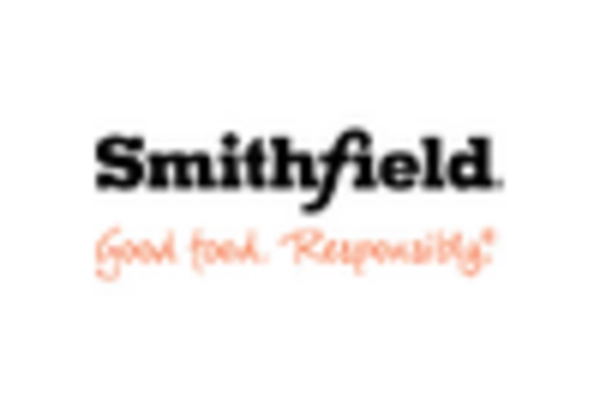Sustainability Focus
Sustainability has emerged as a pivotal driver in the Canned Meat Market, as consumers become more environmentally conscious. The demand for sustainably sourced and packaged canned meats is increasing, reflecting a broader trend towards eco-friendly practices. Many consumers are now scrutinizing the sourcing of ingredients and the environmental impact of packaging materials. This shift is prompting manufacturers to adopt sustainable practices, such as using recyclable materials and ensuring ethical sourcing of meat. Reports indicate that brands emphasizing sustainability are likely to capture a larger share of the market, as consumers are willing to pay a premium for products that align with their values. Thus, sustainability is not merely a trend but a fundamental aspect shaping the future of the Canned Meat Market.
Health Conscious Choices
The Canned Meat Market is witnessing a notable shift towards health-conscious choices among consumers. As individuals increasingly prioritize nutrition, the demand for canned meats that are lower in sodium and free from preservatives is on the rise. According to recent data, the market for healthier canned meat options has expanded, with a significant percentage of consumers actively seeking products that align with their dietary preferences. This trend is further fueled by the growing awareness of the importance of protein in diets, leading to an increased interest in canned meats as a convenient source of high-quality protein. Consequently, manufacturers are adapting their product lines to cater to this demand, thereby enhancing their market presence in the Canned Meat Market.
Convenience and Ready-to-Eat
The demand for convenience is a significant driver in the Canned Meat Market, as busy lifestyles lead consumers to seek quick and easy meal solutions. Canned meats offer a ready-to-eat option that requires minimal preparation, appealing to individuals and families alike. The rise of single-person households and the increasing number of working professionals contribute to this trend, as consumers prioritize convenience without compromising on nutrition. Market data suggests that the ready-to-eat segment of canned meats is experiencing robust growth, with many brands innovating to provide diverse flavors and meal options. This focus on convenience is likely to continue influencing purchasing decisions, solidifying the role of canned meats in modern diets within the Canned Meat Market.
Innovative Product Development
Innovation in product development is a key driver in the Canned Meat Market, as manufacturers strive to meet evolving consumer preferences. The introduction of new flavors, organic options, and specialty diets, such as gluten-free or keto-friendly canned meats, reflects a growing trend towards diversification. This innovation not only attracts new customers but also retains existing ones by offering them more choices. Market data suggests that brands that invest in research and development are likely to outperform competitors, as they can respond more effectively to changing consumer demands. As the Canned Meat Market continues to evolve, the emphasis on innovative product offerings will play a vital role in shaping its future.
Affordability and Economic Factors
Affordability remains a crucial driver in the Canned Meat Market, particularly in times of economic uncertainty. As consumers seek cost-effective meal solutions, canned meats present an attractive option due to their long shelf life and competitive pricing. Economic factors, such as inflation and rising food costs, have led many households to reassess their grocery budgets, often resulting in increased purchases of canned products. Market analysis indicates that during economic downturns, the demand for canned meats tends to rise, as they provide a reliable source of protein at a lower cost compared to fresh meats. This trend underscores the importance of affordability in shaping consumer behavior within the Canned Meat Market.


















Leave a Comment